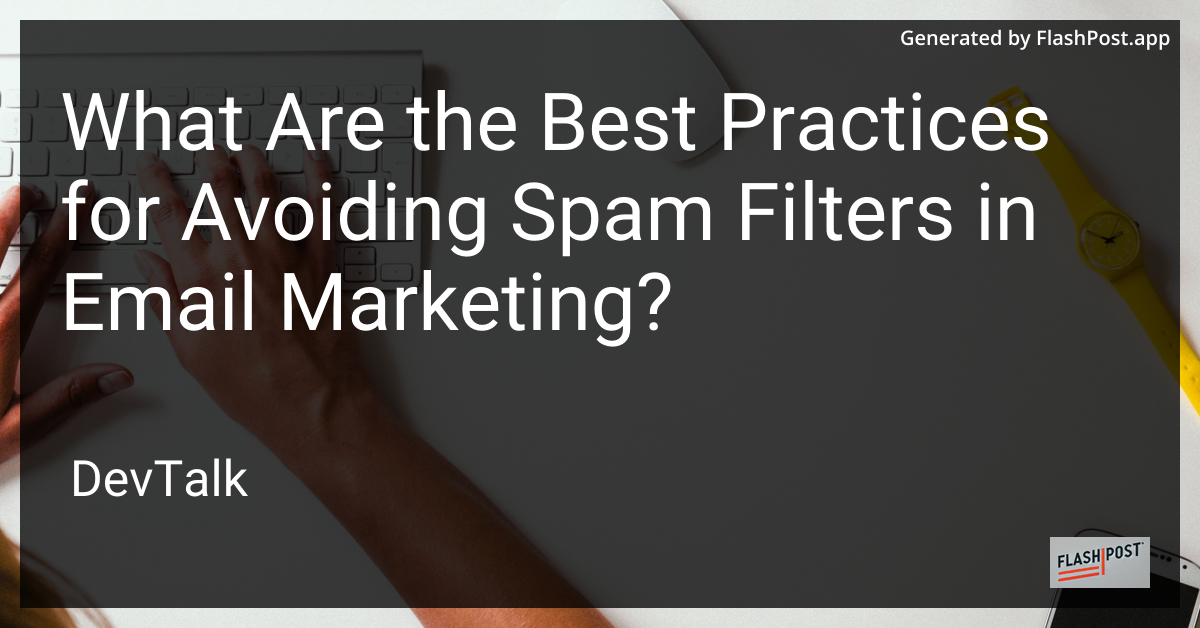What Are the Best Practices for Avoiding Spam Filters in Email Marketing?

Best Practices for Avoiding Spam Filters in Email Marketing
Email marketing is a powerful tool, but one significant barrier can hinder its effectiveness—spam filters.
Ensuring your emails reach your audience's inbox rather than the spam folder requires careful consideration and adherence to best practices. Here's a comprehensive guide on how to avoid spam filters in email marketing, optimized for search engines.
Understanding Spam Filters
Spam filters are protective mechanisms used by email service providers to block unsolicited, harmful, or irrelevant emails from reaching users. They use various algorithms and criteria to determine if an email is spam. Here's how you can work with them, not against them.
1. Build a Quality Email List
- Use Double Opt-In: Always use a double opt-in process to verify that your subscribers genuinely want to receive your emails. This reduces complaints and ensures only interested parties are on your list.
- Regular Cleaning: Maintain a clean list by removing inactive subscribers regularly. High bounce rates can trigger spam flags.
2. Craft Relevant and Engaging Content
- Personalization: Tailor your content to the interests and needs of your audience. Personalized emails have higher engagement rates.
- Balanced Media Usage: Avoid overly complex graphics and external files that can trigger spam filters. Balance your emails with text and images.
3. Optimize Your Subject Line
- Avoid Spam Trigger Words: Refrain from using phrases like "Buy Now," "Free," "Urgent," or using excessive punctuation.
- Keep It Short: Concise subject lines are more appealing and less likely to be flagged as spam.
4. Maintain a Consistent Sending Schedule
- Frequency Control: Don’t overwhelm your subscribers with too many emails. A regular and expected schedule can improve open rates.
5. Authenticate Your Emails
- SPF, DKIM, and DMARC: Implement these email authentication protocols. They help verify that your emails are sent from a legitimate source, improving deliverability.
6. Provide a Clear Unsubscribe Option
- Ease of Unsubscription: Make it easy for users to unsubscribe from your list. This reduces the likelihood of them marking your emails as spam.
7. Test Before Sending
- A/B Testing: Test different versions of your emails to determine which ones reach the inbox more consistently.
- Use Spam Checker Tools: These tools can identify elements of your emails that might trigger spam filters.
Further Reading on Email-Sending Techniques
For those interested in technical aspects of email sending, here are some valuable resources:
- Learn how to send an email using Laravel for a streamlined and efficient workflow.
- Discover methods to send SMTP email in Perl, a robust language for wide-ranging applications.
- Explore how to send email using an SMTP server to enhance deliverability and consistency.
- Check out strategies for bulk email sending while avoiding spam filters.
- Understand the integration of SMTP with Firebase for email sending.
By following these best practices, you can significantly reduce the chances of your email campaigns triggering spam filters and ensure your messages reach their intended audience, boosting engagement and conversion rates.
This SEO-optimized article guides readers on preventing emails from getting caught in spam filters while also linking to further resources on using various technologies for sending emails.